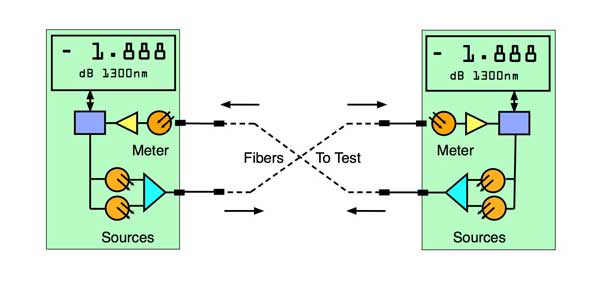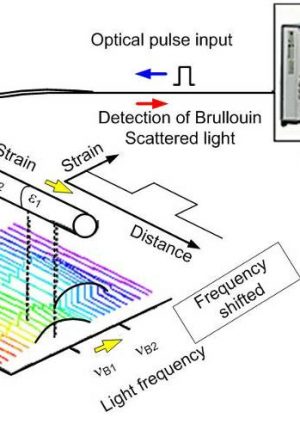Breakthroughs in Optical Fibre Diameter Analyser Measurement Tools
Breakthroughs in Optical Fibre Diameter Analyser Measurement Tools
Blog Article
Optimize Your Fiber Optic Performance: Understanding Optical Fibre Diameter Analyser Modern Technology
The efficiency of fiber optic systems is critically influenced by the accuracy of their diameter, a variable frequently neglected in the quest of optimal signal stability. Recognizing the technology behind optical fibre size analysers discloses the elaborate equilibrium between dimension precision and production top quality.
Value of Optical Fiber Diameter
The diameter of optical fiber plays a crucial function in identifying the efficiency and performance of interaction systems. Alternatively, smaller sizes tend to sustain less modes, which can improve signal quality and decrease crosstalk.

Additionally, understanding the diameter's ramifications can bring about cost financial savings by decreasing the demand for signal boosting and repeaters in extensive networks (optical fibre diameter analyser). Finally, the importance of optical fiber diameter can not be overemphasized, as it directly impacts the general efficiency and reliability of modern-day interaction systems

Just How Diameter Influences Signal Quality
Signal quality in optical fiber systems pivots substantially on the size of the fibre. The size influences several essential specifications, including depletion, bandwidth, and modal dispersion. A smaller sized diameter can cause higher depletion prices, leading to signal loss as light trips through the fiber. This attenuation can compromise the integrity of the transmitted information, resulting in a decline in signal high quality, particularly over fars away.
Conversely, bigger sizes usually enable for improved light capture and lowered modal dispersion, improving signal clarity. In multimode fibers, a larger core size can sustain several light settings, but it may likewise introduce intermodal diffusion, which can degrade signal high quality. As a result, picking the optimum fibre size is critical for attaining the preferred performance in particular applications.
Furthermore, the interaction in between the fibre diameter and the wavelength of the light made use of plays an essential function in establishing the effective transmission distance and overall signal integrity. Comprehending just how fibre diameter impacts signal top quality is vital for network developers and engineers making every effort to maximize optical fiber systems for dependable, high-speed information transmission.
Overview of Size Analyser Modern Technology
In many optical fiber production processes, exact dimension of fibre size is essential for making certain regular efficiency and top quality (optical fibre diameter analyser). Size analysers are sophisticated tools developed to analyze the physical dimensions of optical fibres with high accuracy. They employ advanced optical and laser technologies to gauge the size, ovality, and concentricity of the fibre, therefore giving crucial information for quality assurance
These analysers can run in-line during the production procedure or as component of off-line testing methods. In-line systems allow real-time tracking, enabling suppliers to change criteria immediately, thus maintaining optimum production conditions. Off-line analysers, on the various other hand, supply comprehensive evaluations of batches, guaranteeing that any type of inconsistencies from specified tolerances are determined and attended to.
Size analysers substantially add to the reduction of defects in optical fibres, boosting general product reliability. By regularly determining key specifications, these modern technologies assist in conformity with market standards and specs. As the need for high-performance optical fibres continues to rise, the duty of size analysers ends up being significantly essential in attaining the preferred quality and efficiency criteria in fibre optic systems.
Secret Features of Fiber Diameter Analysers
Although various versions of fiber diameter analysers exist, they commonly share numerous crucial features that enhance their functionality and reliability. One of one of the most considerable features is high-resolution dimension capacities, which guarantee accurate size readings, vital for preserving quality assurance in fibre production. In addition, numerous analysers include sophisticated optical sensing units created to spot i thought about this minute variations in fiber size, thus giving vital information for procedure optimization.
An additional essential function is real-time monitoring, enabling drivers to obtain immediate comments on fiber size throughout the manufacturing process (optical fibre diameter analyser). This capacity helps with rapid modifications and lowers the possibility of issues. Lots of analysers also come equipped with user-friendly interfaces, making it possible for drivers to easily browse via information and settings outcomes
Moreover, durable information storage space and evaluation performances are necessary for tracking historic performance trends and making sure conformity with sector requirements. These functions jointly contribute to the efficiency of fiber diameter analysers in optimizing fibre optic performance.
Ideal Practices for Fibre Optimization

First, regular calibration of optical fiber size analysers is necessary. This makes sure accurate dimensions and reduces potential disparities that might influence performance. Next, preserving a tidy workplace is crucial; dust and impurities can result in signify deterioration.
Additionally, it is crucial to pick fibers that meet certain application requirements. This includes evaluating variables such as attenuation, data transfer, and ecological conditions. Correct setup techniques must additionally be complied with, consisting of avoiding sharp bends and excessive tension, which can compromise fibre stability.
Moreover, utilizing sophisticated monitoring systems can facilitate real-time efficiency analyses, enabling prompt recognition of concerns. Regular testing and upkeep need to be conducted to make sure that fibers remain within optimal operational specifications.
Last but not least, training personnel on the current fiber optimization technologies and methods will certainly boost their capacity to implement efficient methods. By adhering to these best practices, organizations can dramatically boost the efficiency and lifespan of their optical fibre systems, making sure reliable interaction and information transfer.
Verdict
In conclusion, the assimilation of optical fibre size analyser technology is critical for maximizing fiber optic performance. By ensuring exact measurements of fiber dimensions, these analysers significantly boost signal high quality and reduce losses throughout information transmission.
Signal top quality look here in optical fiber systems hinges dramatically on the diameter of the fiber.In several optical fibre production procedures, accurate measurement of fiber diameter click here for info is crucial for making sure regular efficiency and quality. As the need for high-performance optical fibers continues to climb, the role of size analysers becomes increasingly crucial in achieving the preferred quality and performance criteria in fibre optic systems.
These attributes jointly contribute to the effectiveness of fiber diameter analysers in enhancing fiber optic performance.
In final thought, the integration of optical fibre size analyser modern technology is important for maximizing fibre optic efficiency.
Report this page